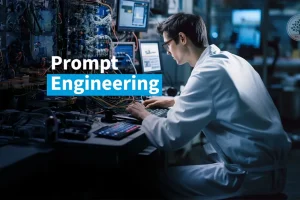Forget relying on the cloud for every calculation. The future of technology is at your fingertips, thanks to the rise of on-device AI. This exciting shift empowers your smartphone and other devices to process data directly, unlocking a world of speed, privacy, and personalized experiences.
Cutting the Cord: Faster, More Efficient Processing with On-Device AI
On-device AI takes artificial intelligence out of the data center and onto your phone, laptop, smart watch, or other smart device. Instead of sending every piece of information to the cloud for processing, your device handles it locally. This leads to several key advantages:
- Blazing Speed: Say goodbye to lag and latency. On-device AI delivers real-time, lightning-fast performance, ideal for applications like real-time translation, object recognition, and augmented reality. Imagine holding a conversation with someone speaking another language without waiting for translations or navigating your city streets with instant AR directions overlayed right in front of you.
- Enhanced Privacy: Your personal data stays on your device rather than being sent to the cloud, reducing concerns about online tracking and security vulnerabilities. This is especially crucial for protecting sensitive information like facial recognition data or personal health data.
- Offline Access: No internet connection? No problem! On-device AI functions independently, enabling features like voice assistants, image editing, and even basic navigation even when you’re disconnected and off the grid.

Beyond Speed: Unlocking Personalized Experiences
On-device AI isn’t just about faster calculations; it’s about tailoring technology to your unique lifestyle, needs and preferences. By keeping your data local, your phone and other smart devices can learn from your individual behavior, adapt to your personal patterns and environment, and offer personalized experiences in ways not previously possible:
- Context-aware Assistance: Imagine a voice assistant that proactively adjusts your home thermostat based on detecting you are on your way home, reminds you to take medication from behavioral patterns, or recommends music based on sensing your current mood.
- Hyper-personalized Apps: Fitness apps that customize workout recommendations based on your fitness levels and goals, language learning apps that adjust difficulty level based on your unique progress, photo editing tools that automatically enhance images based on understanding your preferences – these are just a few examples of how on-device AI personalizes your digital experiences.
- Enhanced Security: Facial recognition that unlocks your phone only when you’re looking at it, voice authentication that learns and recognizes your unique voice pattern, and anomaly detection that identifies suspicious activity on your device – these are just a few ways on-device AI can enhance your digital security.
The Future is On-Device
The potential of on-device AI is limitless. Here are just a few examples of what the future may hold:
- Smarter Homes: Smart home devices that learn and anticipate needs for lighting, temperature and other controls while also understanding preferences of inhabitants over time.
- Preventative Healthcare: Wearables with embedded AI that continuously monitor vital signs, detect early symptoms for preventative care, and provide real-time personalized feedback and alerts.
- Adaptive Learning: Education apps, platforms and software that adapt to individual learning paces, cater to personal strengths/weaknesses, and offer customized feedback.
Challenges and Considerations with On-Device AI
While on-device AI shows great promise to enhance our technology experiences, there remain challenges and considerations as the technology matures:
- Limited Processing Power: Phones, wearables, smart home devices and other hardware have less processing power compared to high-powered cloud servers. Efficiently optimizing AI algorithms for these devices remains an area of focus.
- Battery Drain: Performing intensive computations like neural networks locally on devices can quickly drain batteries. New solutions need to consider energy efficiency to balance functionality with battery life.
- Privacy Considerations: While on-device processing enhances privacy by avoiding the cloud, data security and ethical use of AI remains an ongoing consideration to prevent potential misuse.
The Future of Personalized, Intelligent Technology is Here
The shift towards on-device AI is not just a trend, it is a tectonic revolution poised to define the next era of technology. By empowering devices to understand us at an individual level, anticipate our needs and make our lives easier, safer and more personalized, the future is truly right within our grasps.













Add Comment